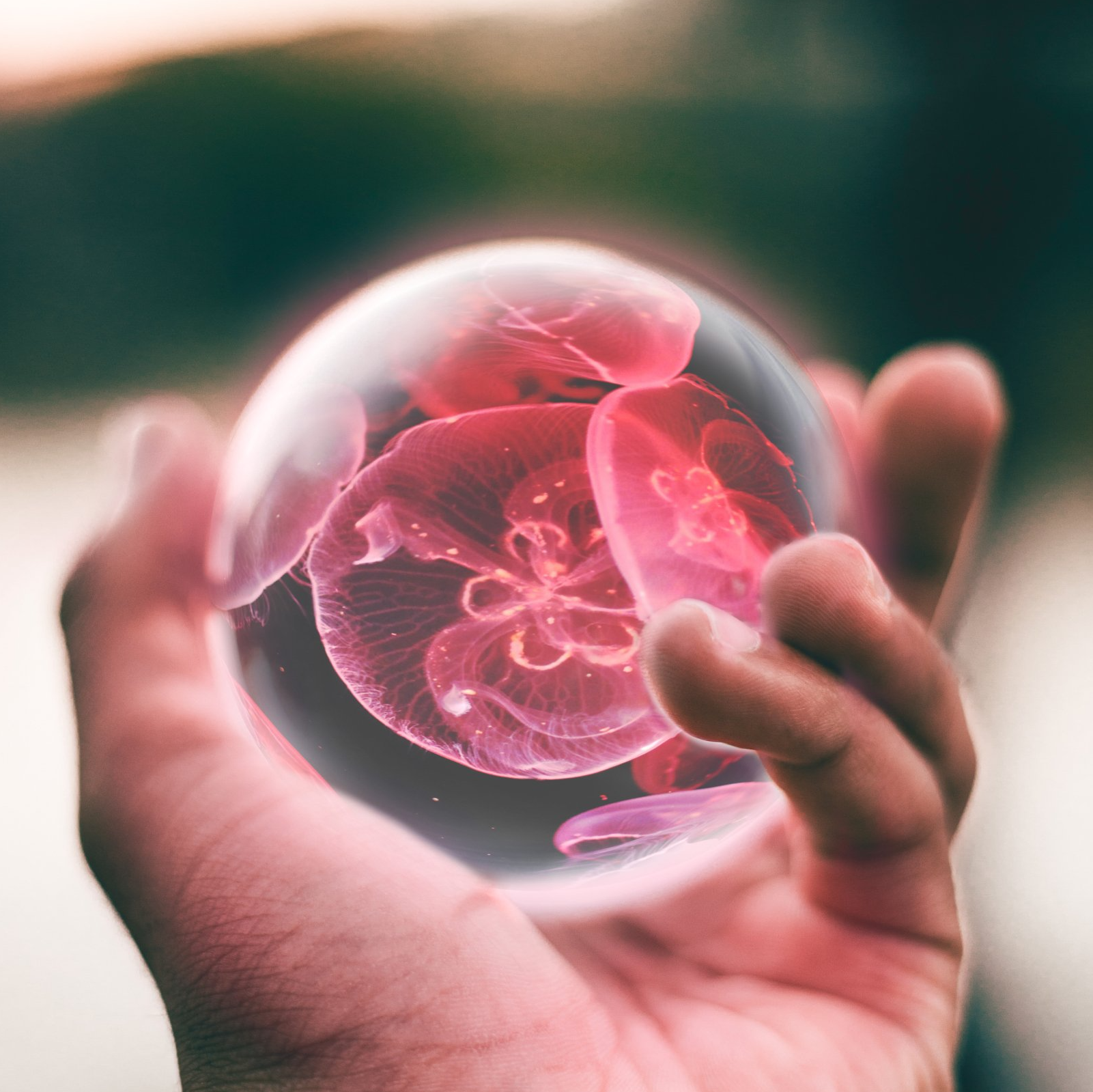Mark A. West • 17 December 2020
Dreaming Dimensions
Dreams. What exactly are they? Who, or what, is sending them? Why are they being sent? Maybe they come from ‘other realities’.
There are many things that are unknown about dreams, and sleep. In dreams we experience ‘other realities’, and in theoretical physics ‘other realities’ is a possibility that is taken seriously.
The most significantly important part of everyone's life, sleep, is allowing you to close a thin door on reality and peer through a glass door into another one. While asleep, your brain recovers, and is often more active than in the waking hours.
An average adult sleeps for about 7 hours and 20 minutes; some people may sleep for a longer, or shorter period. Older people need less sleep as do females, introverts, and thinner people. Those who sleep the most are the young, males, the overweight, and extroverts. Even if you slept as long as you could you would have few or no side-effects.
Sleep is divided into two main categories which are REM (rapid eye movement), and two stages of non-REM, light and deep. Dreams occur in REM sleep as this is when the brain is the most active, sometimes more than when you are awake. We also dream in non-REM. We may have different types of dreams in the various stages.
Adults are asleep for about a third of each 24 hour period, while babies sleep for two thirds of a day, which is mostly spent in REM dream sleep. Sleep plays a significant role in brain development. Incredibly, when you reach the age of 75 you have dreamt for at least 10 years of the total 25 years you have spent sleeping.
Patrick Bourke, who teaches Sleep, Dreams & Circadian Rhythms explains, “At a neurological level we have a fairly good understanding of what happens in the brain when we sleep. There are specific centres that maintain alertness. These centres are actively turned off. This causes sleep. The chemical changes that trigger this are partially identified and result from a build-up during wakefulness.”
Sleep and wakefulness are regulated by a part of the brain called the pineal. When dreaming we all give off electrical wave pulses and motions from our scalps as well as other complex brain wave patterns in the different stages of sleep. These electrical waves are not yet fully understood. Like most things to do with sleep there are a lot of theories and few facts.
The question, ‘Why do we sleep?’ has baffled scientists for centuries. No one really knows for sure. Some scientists believe we sleep so the mind can organise its memory, like a computer defragmenting, or a nightly update, but that is only one explanation for a very complicated process. More explanations are needed.
There are some scientists who are convinced that there is a solely biological reason for sleep. Some doctors used to believe that we slept to gain energy, but only small amounts of energy are gained from sleeping. But the energy gained by sleeping may be a different type than from eating food or resting. Or it could be that we sleep for an entirely different reason.
It could be said, ‘We sleep so we can dream.’ Everyone has dreams even if they don’t remember. No-one can claim to know what all dreams are, how, and why they work the way they do, or where they all come from. There are plenty of theories, some of which have been tested.
“It is the human hunger to find meaning and purpose in all things that has driven the belief that dreams must have some purpose or meaning”. (1.)
Some speculation of the nature of dreams includes:
- messages from figures in religion, such as god
- experiences from a past life
- psychic in nature
- prophetic visions
- connected to people, living or dead
- reflections of our inner spirituality
- affected by the physical body
- influenced by outside stimuli such as, sounds, light and electrical waves
- the subconscious, organising, healing, and fantasising
- memories
- another psychological reason – there are many.
Some of the above have plenty of evidence to support them. The conscious and subconscious mind does need to sort itself out every day. Pent-up desires and anxieties do come into dreams. What the body feels does also have an effect on your dreams and psychological explanations can explain many aspects of dreams.
In dreams we have freedom of belief, societal freedom, spiritual freedom, freedom from time, and freedom from any known physics. Dreams are also significant in many mythologies, legends and folktales from around the world.
“Dreams are like mirrors, they reflect everything we are and everything we have been through. If we could fully understand this linking pattern, we would discover not only the secret of dreaming but the secret of life itself.” (2.)
During sleep our awareness is far more acute than when awake. Can we still hear when asleep, or is this awareness from an extra sense? The fact that dreams can be influenced by our surroundings, even if only a little is accepted and has been demonstrated in a laboratory, but scientists do not know for sure how or why this happens. We are more open to external stimuli when sleeping, such as noises, presence of others, lights, and electrical waves. This shows that our brains are still receptive. We can receive some real, recordable signals when we are asleep. Our brain could receive unknown signals, messages and vibrations from another quantum reality without us knowing.
Dreams could be the mental interpretation of signals from another reality, messages in time and space. Everything is made up out of tiny vibrating strings, according to theoretical physics. The vibrations of these Superstrings vibrate and make all the matter at the quantum level. These Superstrings exist in 10 dimensions of space, so they would be vibrating in every alternate version of this universe and other universes.
It is surprising how seriously many physicists are taking the possibility of parallel universes. These physicists say the ‘Multiverse’ or ‘Alternate realities’ have many universes spinning off from this reality. This is a very real scientific possibility, which fits with mathematical models; it is not science fiction. These alternate realities would be infinite in number and anything imaginable can be happening in them. Similarly, anything can happen in dreams.
Max Tegmark, professor of physics and astronomy at the University of Pennsylvania said that the concept of the Multiverse “Is tested in well tested theories such as relativity and quantum mechanics.” He continued, “The key question is not whether the Multiverse exists, but rather how many levels it has.” (3.) By ‘levels’ he means different types of alternate realities. Every time a quantum particle, or you, does anything the number of possible realities doubles. There is another universe for every time you imagine, or dream.
Michio Kaku, an acclaimed physicist and professor of theoretical physics at the City College of New York said, “Our universe could be one bubble floating in an ocean of bubbles.” (4.) Not all the ‘bubbles’ would be the same size and shape or made from the same ‘liquid’.
If other realities really do exist then they are sure to have some effect on our own reality. We already know that some of the smallest things on the planet can eventually affect everything else, even if it is only on a small scale. Think of cross-contamination of chicken in a kitchen. The tiny particles from the chicken could eventually be everywhere in the kitchen. Similarly, alternate realities would eventually contaminate all the other realities; they would do this from the vibrations of string.
There could be so many realities that each may be very different or very similar to our own. Fictional worlds could really exist as well. We live in a world where everything is governed by known physics and logic, but we dream in a place which is governed by nothing but our mind; anything can happen.
During sleep our scalp gives off waves such as alpha, beta and delta. If we can project these wave patterns, and we are easily influenced in our dreaming state by known outside influences, then we could also be receiving similar wave patterns in the form of vibrations of the superstring from other realities.
It could be argued that: "In some alternate worlds, inter-dimensional travel is possible. This world is one of those infinite worlds the travellers could visit, thus making parallel universes fact and making it possible to travel to parallel universes from this one. Beings from other realities could be visiting our reality right now. If they could visit they could also communicate, and our sensitive sleeping brain picks up these communications then interprets them into dreams." So the question may be; what comes first, the dream of strange places, thus making us the creators of realities, or the real place which somehow influences our dreaming mind?
If the above is true then it is certain that some of what we dream is really happening in an alternate reality. And the not yet fully understood sciences of theoretical physics, sleep and dreams may, one day, show that parallel realities exist, and will prove that they interact with our sensitive sleeping minds.
So, when you’re in the arms of Morpheus, the Greek god of dreams and sleep, ask him if he is telling you truths or fictions.
REFERENCES AND FURTHER READING:
Stephen Hawking: Brief History of Time.
Stephen Hawking: The Universes in a Nutshell.
William C. Dement: The Promise of Sleep.
Jacob Empson: Sleep and Dreaming.
Hyperspace: A Scientific Odyssey through Parallel Universes, Time Warps, and the Tenth Dimension
BBC: Parallel Universes at www.bbc.co.uk/science/horizon/2001/paralleluni.shtml
BBC: Why do we sleep? at www.bbc.co.uk/science/humanbody/sleep/articles/whatissleep.shtml
www.sciencefocus.com/the-human-body/why-do-we-sleep
Paranormal Magazine: Issue 24, 2007
- Patrick Burke, University of Lincoln.
- Jacob Empson: Sleep and Dreaming.
- BBC Two: Horizon, Parallel Universes. February 2002.
- www.cliftonunitarian.com/toddstalks/paralleuniverses.

